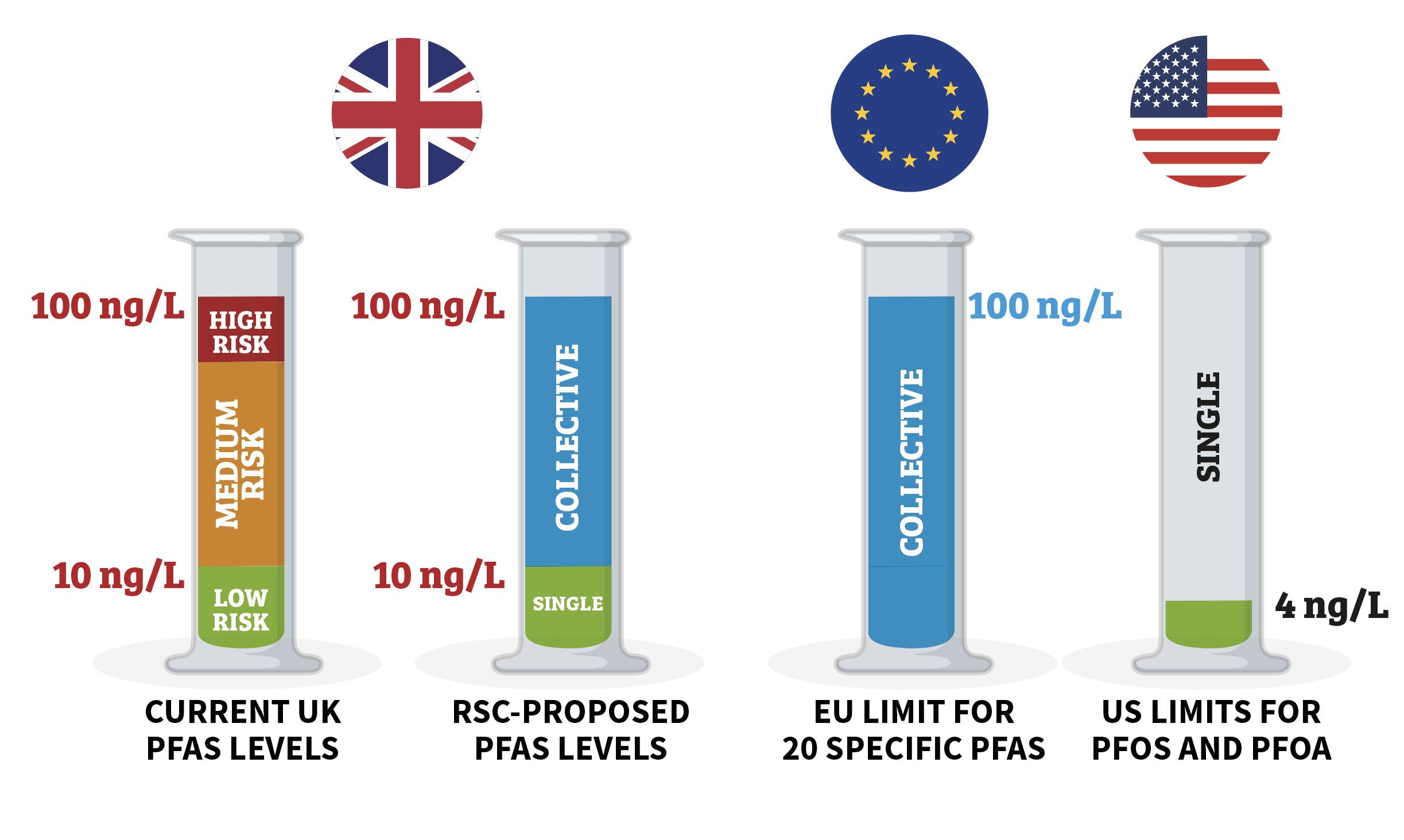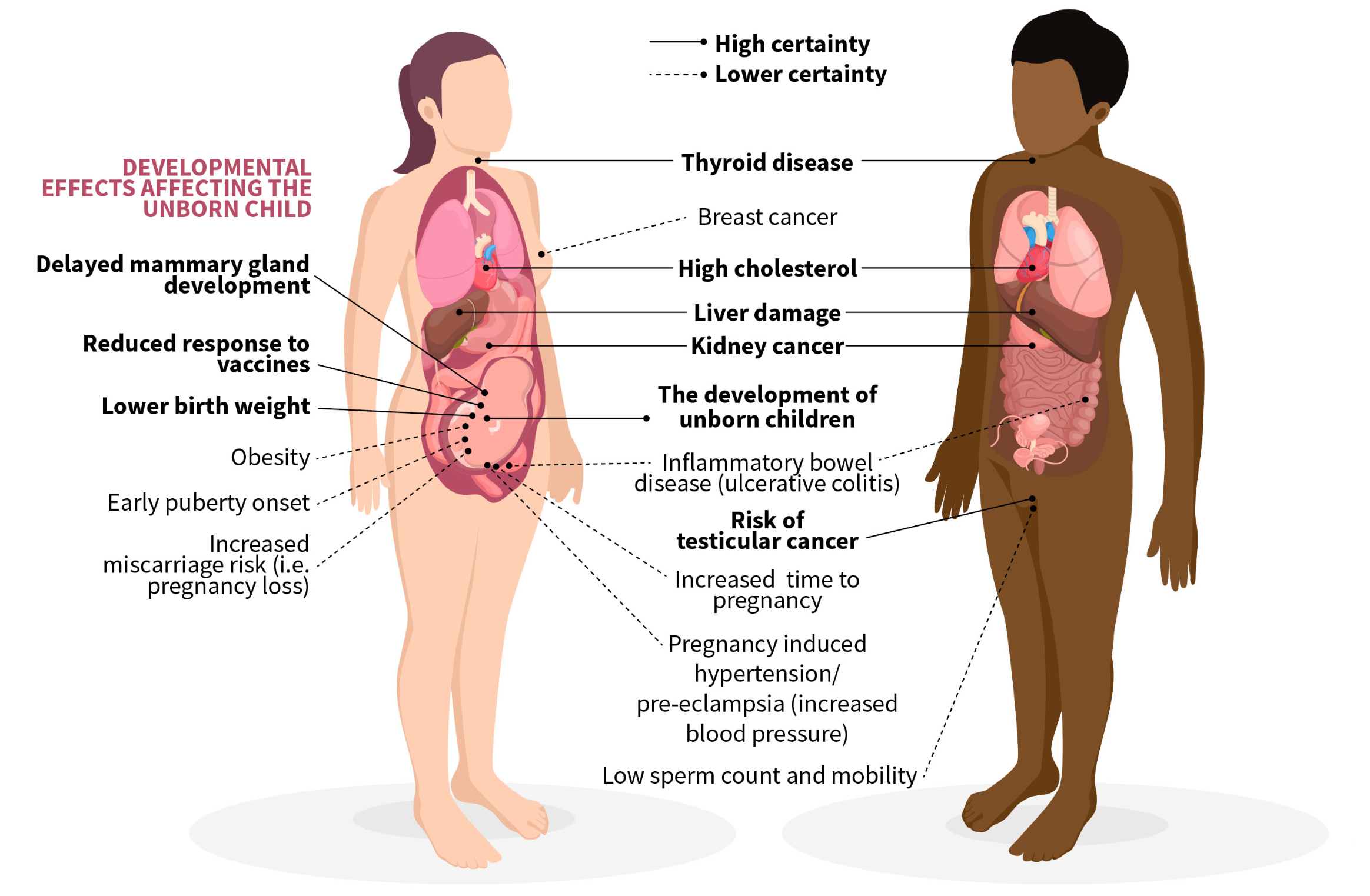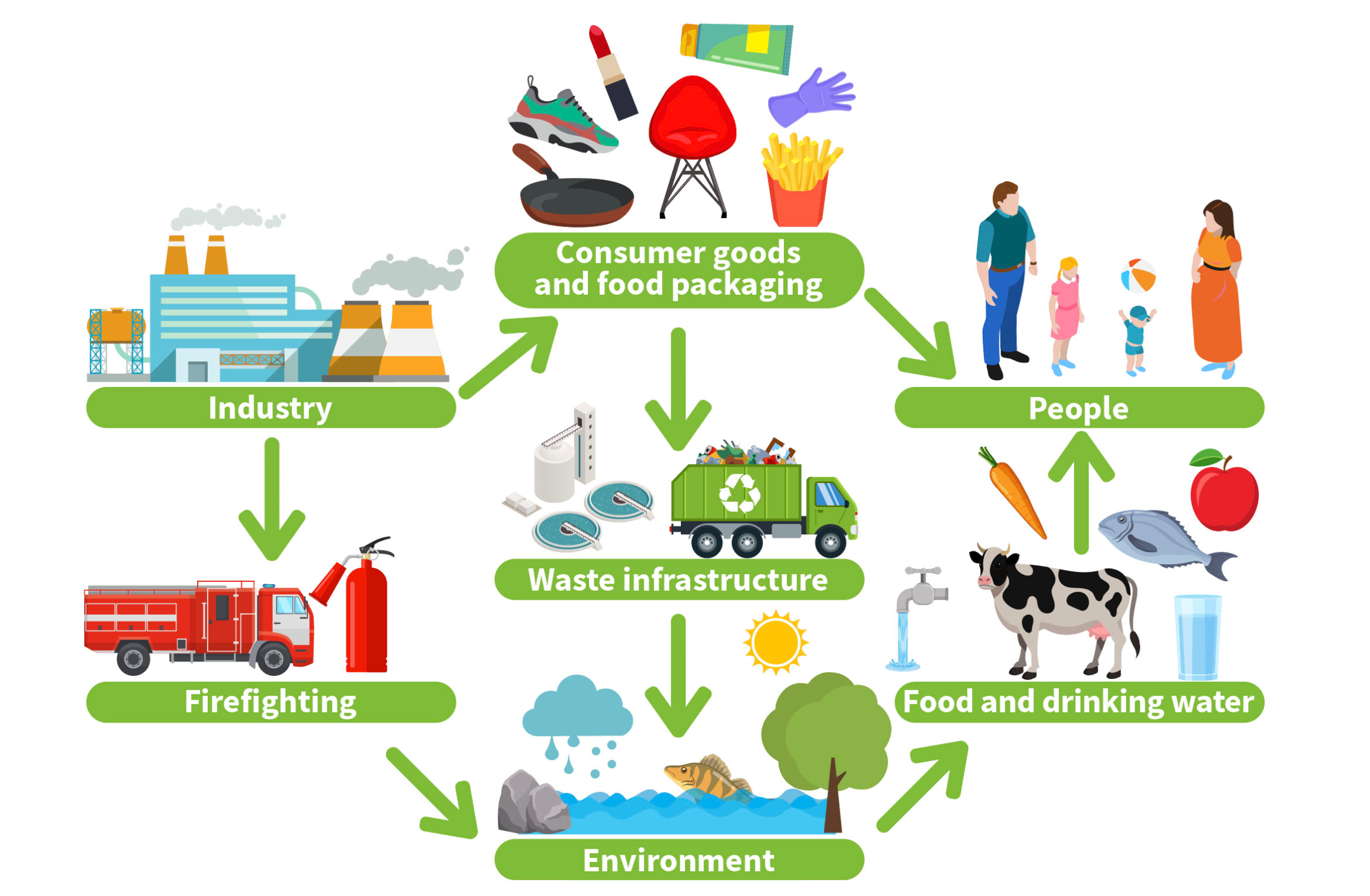We are calling on the UK Government to overhaul its drinking water standards after our analysis revealed more than a third of water courses tested in England and Wales contain medium or high-risk levels of PFAS. This group, more commonly known as forever chemicals, is linked to a range of health issues including testicular cancer, fertility issues and developmental defects in unborn children.
More than 4,700 The number of different PFAS types, sometimes known as forever chemicals.
More than a third The proportion of tested water courses in England and Wales that exceed our recommended limits.
10 ng/L* Our proposed limit on the concentration of each forever chemical in drinking water.
100 ng/L Our proposed limit on the total concentration of all forever chemicals in drinking water.
Watch our video #CleanUpPFAS
More than a third of water courses tested in the UK would breach our limits for ‘forever chemicals’
New analysis has revealed that 35 and 37 percent of water courses tested in England and Wales contain medium or high-risk levels of PFOS and PFOA respectively, which are types of PFAS (per- and polyfluoroalkyl substances). PFAS are often referred to as ‘forever chemicals’ because they are near indestructible in the natural environment or in our bodies.
There is growing evidence that some PFAS carry serious health risks including cancer, thyroid disease, and fertility problems as well as developmental defects in unborn children. While they can be filtered out of drinking water, UK water companies are not required by law to reduce them until they are deemed ‘high risk’.
Current standards allow concentrations of each individual PFAS at up to ten times the level considered ‘low risk’, which is 10ng/L (nanograms per litre). There are hundreds of different types of PFAS but there is currently no overarching limit on the total concentration when they are combined.
For comparison, the US has now a limit of four nanograms per litre (ng/L) for each of PFOS and PFOA, two of the most common PFAS, while the EU’s Drinking Water Directive states that 20 widespread PFAS must collectively not exceed 100 ng/L.
Acceptable levels of PFAS
In August 2024, the Drinking Water Inspectorate set a new stricter limit of 100 ng/L for the cumulative total of 48 different types of PFAS, which falls roughly in line with our proposals. However, government legislation has not yet been passed to reflect that position.
Read our full policy position statement, which contains in-depth explanations and references to supporting research.
Why does reducing PFAS matter?
PFAS break down slowly, with some taking more than a thousand years to do so, so they stay present in the environment for a long time. They have important uses in thousands of products, ranging from non-stick pans to medical devices and firefighting foam. But some have been linked to a range of serious health conditions including:
- Testicular cancer
- Thyroid disease
- Increased cholesterol levels
- Liver damage
- Fertility issues
- Harm to unborn children
We need to make sure they are handled appropriately during manufacturing, disposed of safely, and filtered out of our drinking water. Limiting the PFAS level means we can all live our lives without worrying about the adverse side effects of forever chemicals on our bodies.
Effects of PFAS on human health
This diagram shows the variety of serious health hazards associated with PFAS exposure. These chemicals have already been found in human bodies around the world and given that PFAS take so long to degrade, this could lead to intergenerational problems. Image adapted from European Environment Agency: Emerging chemical risks in Europe - ‘PFAS’
Use our interactive map to find out the PFAS concentration levels in water courses in your area and write to your MP.
Zoom in to your area or use the search to find your constituency if you know it, check the higher levels shown in red, then click to find your MP details.
Data is freely available from The Forever Pollution Project
What causes high concentrations of PFAS?
Contamination is likely to be an issue in water courses near sites where there has been a significant discharge of PFAS, including:
-
Airports, military sites, fire training areas and sites of major fires, where fluorinated AFFF (a firefighting foam) is used. For example, high concentrations would be expected at the site of the Buncefield oil depot fire in Hemel Hempstead.
-
Industrial facilities that produce and/or use PFAS. High concentrations of PFAS have been found in water courses in industrial or formerly industrial areas, such as the Humber Estuary.
-
Wastewater treatment plants that produce effluent and sludge contaminated with PFAS.
-
Landfill sites where PFAS-contaminated liquid may percolate through the deposited waste and leak out into surrounding soil and water (known as landfill leachate).
-
Incinerators usually aren’t hot enough to fully combust PFAS, therefore they may produce ash that contaminates surrounding air, soil and water.
Lifecycle of PFAS
This graphic shows the various ways that we engage with PFAS and how they can enter our bodies, food and water sources. After fulfilling their initial purpose, these chemicals can unexpectedly drift into other aspects of our environment (adapted from Arnika).
Our evidence report
Are there possible solutions?
Read our evidence report to understand more about PFAS, the three questions to which we must find answers, and the work that has already gone into tackling this issue.
Learn more about the problems associated with forever chemicals and the potential ways to address this crisis.
Our call to clean up PFAS
We’re calling for five simple action points from the UK Government:
-
Reduce the current cap per individual type of PFAS 10-fold from 100 nanograms per litre (ng/L) to 10 ng/L of drinking water.
-
Introduce a cap on the total level of PFAS combined of 100ng/L.
-
Ensure the many hundreds of sources of PFAS are reported and captured in a national inventory.
-
Impose and enforce stricter regulatory limits on allowable levels of PFAS in industrial discharges.
-
Set up a national chemicals regulator to provide better strategic coordination of monitoring and regulation of all chemicals including PFAS.
We have already made progress on achieving one of these goals as in August 2024, the Drinking Water Inspectorate set a new stricter limit of 100 ng/L for the cumulative total of 48 different types of PFAS, which falls roughly in line with our proposals. We are still pushing for the UK Government to put this into legislation to strengthen that position.
What can you do?
Write to your MP, MSP, MS or MLA joining our call for the Government to impose new statutory drinking water standards.
Contact your water company to urge them to implement the limits above.
Public engagement
If you are an RSC member working with young people or public audiences on cleaning up water and are looking for engagement and outreach ideas you can use our resources in the members area.
Help spread the word
On social media
Download the image to share on social media and encourage your friends and family to join our campaign for safer drinking water.
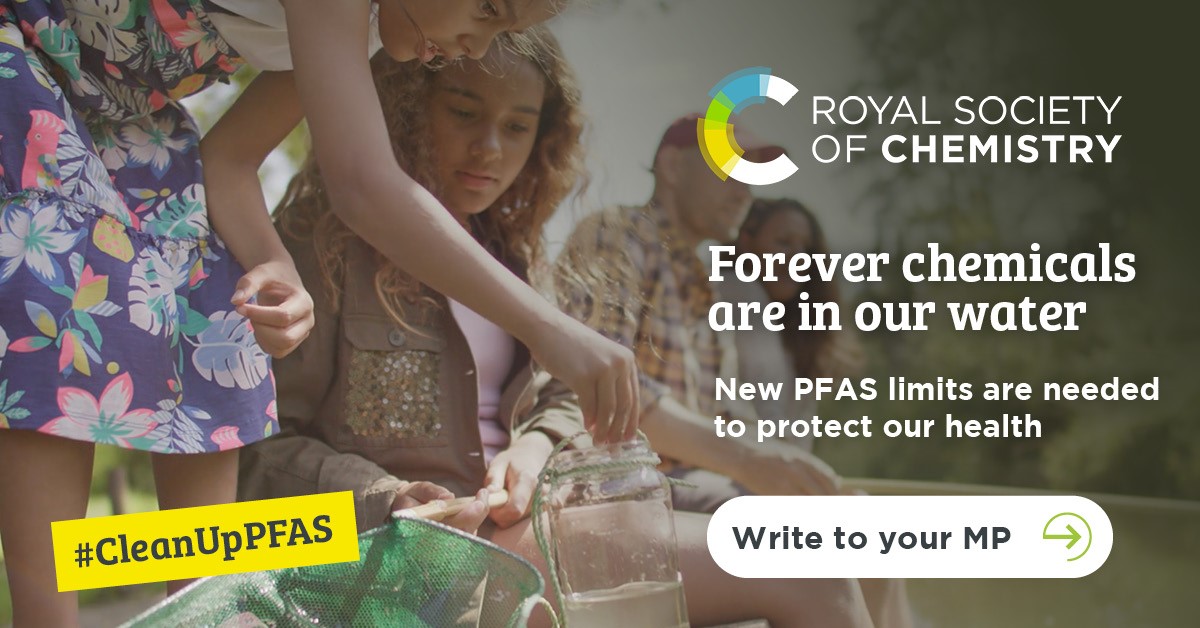
@RoySocChem is urging the Government to overhaul its drinking water standards to limit forever chemicals linked to cancer, fertility issues and other serious health impacts. Join our campaign at [rsc.li/clean-up-pfas] ![]() Download image for Twitter and Facebook
Download image for Twitter and Facebook
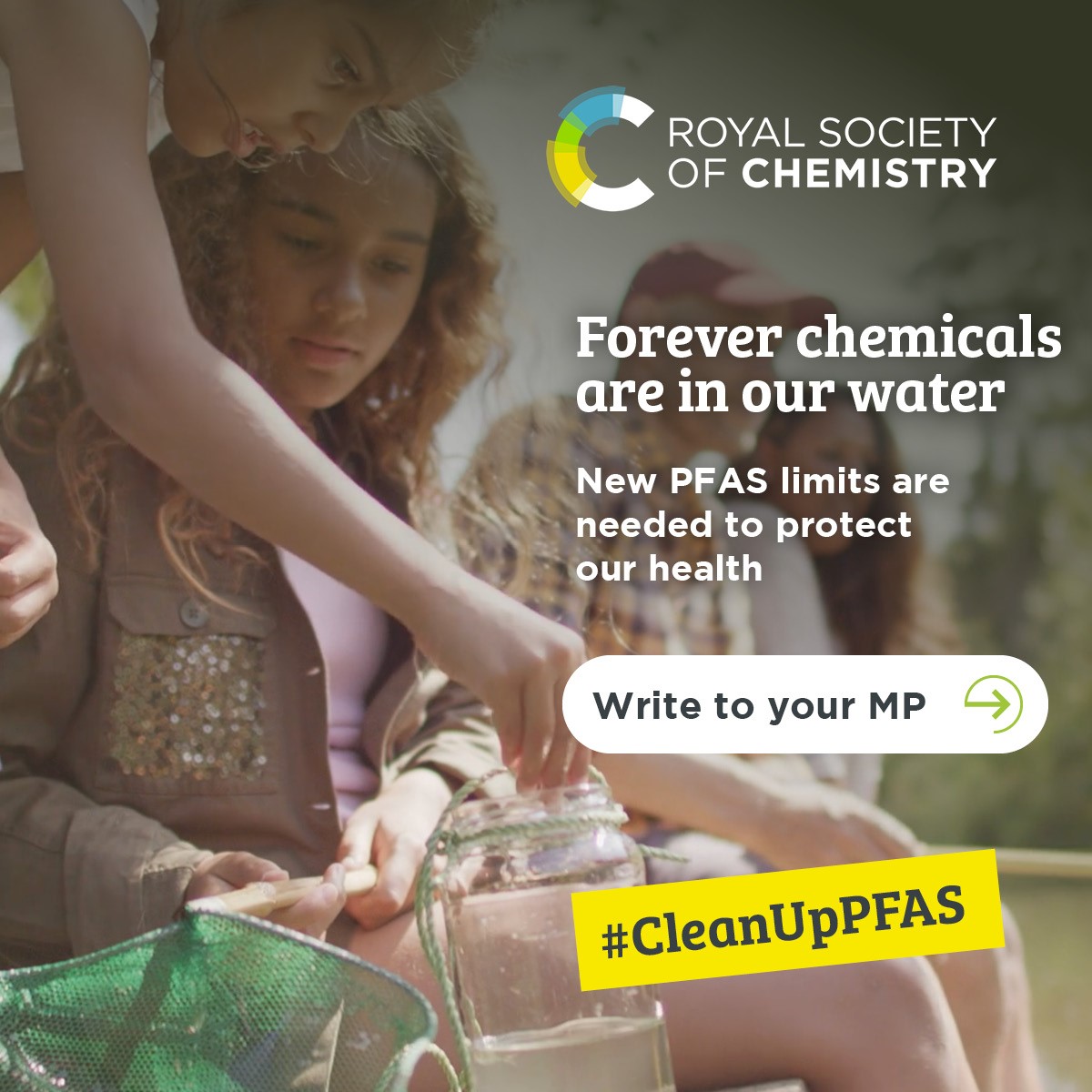
@RoySocChem is urging the Government to overhaul its drinking water standards to limit forever chemicals linked to cancer, fertility issues and other serious health impacts. Join our campaign at [rsc.li/clean-up-pfas] ![]() Download image for Instagram
Download image for Instagram
RSC member resources
If you are an RSC member working with young people or public audiences on cleaning up water and are looking for engagement and outreach ideas you can use our resources in the members area.
*nanograms per litre. One nanogram is a weight measurement equal to 0.000 000 001 g


